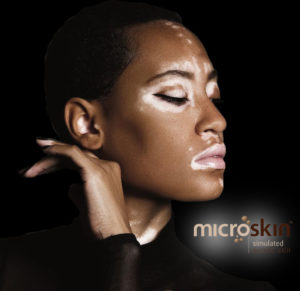
Seven eye-opening facts about Vitiligo
Vitiligo or leucoderma is a disorder that causes a sudden loss of color in the skin. In brief, the skin suffers from loss of melanin due to which white irregular spots start growing on your body. Loss of melanin happens because the cells die or stop working.
Leucoderma starts small but develops into large patches all over the body. What’s saddening is that many people get insecure about their looks when they become a victim of this disorder. Want to learn more about Vitiligo? Here are a few interesting facts about Vitiligo.
- Vitiligo doesn’t lead to any pain-
Leucoderma is a disorder that does not cause any physical pain. The patches that start building up on the skin do not hurt one bit. Although Vitiligo changes the color of the skin and even hair, the disorder doesn’t cause any pain. Most people who become a victim of Vitiligo become clinically depressed because of components such as a change in the appearance. Leucoderma is caused due to unknown reasons. Nonetheless, infections caused by viruses and stress are two of the reasons that can lead to Leucoderma.
- Vitiligo mostly occurs in people suffering from diseases related to the immune system-
Vitiligo does not choose its victims based on color, sex, race, or age. This disorder can occur in people of any age group and even races. However, people suffering from diseases affecting the immune system have more chances of getting Vitiligo. Besides, Leucoderma is not a deadly disease. It does not put one’s life at risk due to which the human body stays perfectly healthy while suffering from Vitiligo. Vitiligo, therefore, isn’t a genetic-based disease and can occur in diversified groups of people.
- Vitiligo is a non-transmittable disease.
Leucoderma’s only effect is to produce patches on different parts of your body. This disorder, however, isn’t contagious. Hence, this disease doesn’t pass on from person to person by any means of contact. For instance, the disorder cannot be transferred by touching an infected person or even being around them.
- Vitiligo doesn’t depend on your diet.
Contrary to popular belief, Vitiligo has nothing to do with the kind of food you eat. Several ridiculous myths state that Citrus and other similar foods can be the cause of Vitiligo. However, this is misleading. These beliefs are nothing but myths. You won’t get Vitiligo by eating particular kinds of foods. You can hence consume any food and drinks if you’re suffering from Vitiligo until your doctor allows you to.
- Having white spots on your body doesn’t necessarily mean you have Vitiligo.
Vitiligo is a very peculiar disease that affects numerous people because of losing melanin, a pigment that regulates the color of different body parts, such as hair, skin, and even eyes. Nevertheless, if you find white patches on your body, you have very few chances of having Vitiligo. It is essential to seek advice from a professional when you find white patches on your body. Many diseases, such as leprosy, Nevus, and fungal infections, show symptoms of white spots as well.
- The most common age groups that are affected by Vitiligo are 10 to 30.
Although Vitiligo can occur at any age, most people get this disease at a very young age. The disorder starts developing at the age of adolescence or teenage. Recent studies show that India and Mexico have been two countries with the highest number of leucoderma cases. Many people tend to isolate themselves due to the sudden change in looks.
- Vitiligo is not correlated to skin cancer and other similar diseases.
Vitiligo is a skin disorder that is entirely unrelated to diseases such as leprosy or skin cancer. Skin cancer can be quite overwhelming and painful. Vitiligo, on the other hand, is a comparatively less- harmful disease. What causes Vitiligo is still unclear, but this disorder can affect anybody, genetically or not. The patches that are caused by Vitiligo mostly occur in areas that are more exposed to the sunlight. Nonetheless, these spots can also be found on the least vulnerable parts of the body, such as genitals, eyes, rectal parts, and even groins.
Our society must try to be more accommodating with people who have Vitiligo so that we can finally stop treating them differently or isolating them. It is essential for us as human beings to be more sensitive towards the people affected by this disorder so that they don’t feel the need to be embarrassed by the way they look.